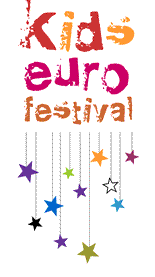October 31st is a big day for kids around this country and this year,with Sandy just behind us,Halloween will not be the same.
Au pairs,if you go out trick-or-treat tonight with your kids,be aware of downed trees and power lines.Avoid those streets and make sure it is safe.
Also ,here is a bit of history behind Halloween.Stay safe and have fun!
How did trick-or-treating begin?
The modern practice of trick-or-treating appears to have originated from a combination of the Celtic new year celebration called Samhain celebrated on October 31st and the early Christian ritual related to All Saints Day, celebrated on November 2nd.
The Celts believed that on Samhain, spirits of the dead would come back and try to posses the bodies of the living. So to avoid being possessed by a ghost, living Celts would dress up in scary costumes and parade around the town making a lot of noise, so as to scare the spirits away. This is where the modern tradition of wearing costumes seems to have derived from.
As for the collection of treats, most scholars credit early Christians’ ritual of “souling” to the development of this festive activity. In connection with their All Saints Day celebration, Christians would walk door to door collecting square pieces of currant bread called “soul cakes”. The person who collected the cakes would say prayers on behalf of a deceased relative. The more cakes collected, the more prayers were said and the quicker the soul of the deceased would find heaven.
The combination of these two early activities has evolved into the modern practice of trick-or-treating.
How did “bobbing for apples” become a popular Halloween activity?
The apple has historically been associated with immortality and fertility because when cut down its center it has a five point star. This five pointed star was a common goddess symbol in many ancient religions and believed to help determine marriages, especially during the magical, spiritual season of Samhain. During early celebrations, apples would be hung either from a string or placed in a tub of water and young, unmarried people would try to take a bite. The first one to successfully bite the apple was believed to be the next one married.
Why are bats associated with Halloween?
In early Halloween celebrations, people often gathered around giant bonfires to ward off evil spirits. Night-flying insects were attracted to the flames, which made bonfires the perfect feeding ground for bats. Thus, bats became quickly synonymous with Halloween celebrations. Additionally, during the Middle Ages, people began to link bats to witches because the both seemed to mystically fly throughout the dark night and disappear during the day.
Have people always carved pumpkins for Halloween?
Jack-o-lanterns are an Irish tradition brought to America by early Irish immigrants. But early jack-o-lanterns were not pumpkins, they were turnips, rutabagas or gourds that were hollowed out. Lights were placed in them to ward off evil spirits and to keep “Stingy Jack” (the legendary Irish drunkard and prankster, believed to have made a deal with the devil and condemned to walk the earth upon death, whose namesake has been given to modern day, carved pumpkins) away. It was not until the 1800’s when Irish immigrants came to America and found pumpkins to be so plentiful and easier to carve, that the tradition was altered.

